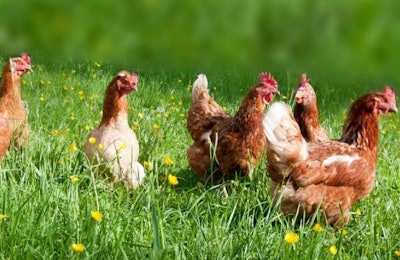
The Humane Society of the United States (HSUS) and the Animal Agriculture Alliance (Alliance) aren’t often on the same side of the paddock. (Shocking, right?) So I was especially struck while reading the Alliance’s list of its top five ways to fight back against animal rights activists. Here’s why:
- Animal Agriculture Alliance’s tips for combatting animal advocates: 1) Do the right thing now, 2) Do your homework on employees, 3) Ensure all farm employees are trained on animal welfare, 4) Communicate proactively and 5) Remove the mystery.
- The HSUS’ tips for improving animal welfare: 1) Do the right thing now, 2) Do your homework on employees, 3) Ensure all farm employees are trained on animal welfare, 4) Communicate proactively and 5) Remove the mystery.
Look familiar? Let’s take a stroll through each topic.
1. Do the right thing now.
Animal welfare is dynamic: it changes as science, public opinion and what we know about animals shifts and grows. A few decades ago, “good animal welfare” may have been measured in agriculture simply by animals’ productivity. But today we know more about the importance of meeting animals’ behavioral needs and how consumers won’t accept systems that deny animals’ their ability to engage in important natural behaviors. With this in mind, many producers are doing the right thing now: pork producers are shifting away from gestation crates toward group housing, egg producers are scrapping their battery cages in favor of cage-free facilities and broiler producers are providing chickens with enriched living environments and shifting toward healthier breeds of birds.
These savvy producers seem to have taken a note from the veal industry. Over many decades, veal sales dropped as producers defended their use of crates against mounting consumer outcry; by the time the industry came around to doing the right thing, consumption levels had plummeted. Lesson learned? As Alliance suggests: do the right thing now, before it’s too late.
2. Do your homework on employees.
Farm workers — and even supervisors — have been documented egregiously abusing animals: kicking them, stomping them, dragging them with forklifts, throwing them, punching them and more. This type of abuse is not a matter of standard practice, but of bad apples. Lesson learned? As Alliance suggests: do your homework on employees to try and weed those bad apples out before they ruin the whole bunch.
3. Ensure all farm employees are trained on animal welfare.
If you do get some bad apples, proper training may help avoid abuse. But proper training goes beyond simply asking employees not to beat animals: it means showing the importance of taking animals’ interests seriously. This means demonstrating that abuse — including abusive production methods — isn’t tolerated. When employees work around animals in distress — whether from confinement or genetic manipulation that leaves them in pain — they can easily become desensitized to suffering, leading to abuse. So, housing animals in open groups, using better slaughter methods like controlled-atmosphere stunning for broilers, breeding chickens to be healthy rather than just massive: call it “training by the example,” to show employees how seriously you take animals’ health and well-being and create a culture of compassion.
4. Communicate proactively.
Doing the right thing for animals? Switching to those better production methods that actually meet the animals’ needs? Showing employees how you invest in animal welfare? Then shout it from the mountaintop! Of course, communicating about using systems that simply don’t resonate with consumers often backfires (not many people will see an image of a pig in a gestation crate and feel it’s something they want to support). But countless farmers and ranchers out there are improving the methods they’re using, and communicating about it — and rightly so.
5. Remove the mystery.
In this modern WikiLeaks-YouTube-Twitter economy, transparency rules. Consumers are no longer looking just for goods that come at a value, but for goods that align with their values. So give consumers the full story so the free market can dictate where things go. Using crates or cages? Show the footage online (it won’t likely resonate with consumers, but it’d certainly be transparent). Conversely, going cage-free or crate-free? Shifting to better slaughter systems? Show the world what you’re up to. Use technology to help you do it, like YouTube, Facebook Live and other platforms, many of which are free.
So there you have it: It seems that five ways to combat animal advocates are also five ways to improve animal welfare. On this, the Humane Society of the United States and the Animal Agriculture Alliance may have actually found agreement. Whodathunk it?
Comprehensive resource for cage-free eggs available
A new collection of exclusive articles, blogs and infographics on Cage-free Eggs and Consumer Trust in the Poultry Industry, written by trusted WATT Global Media editors and industry experts will equip egg producers and marketers with information to help them make critical business decisions. Purchase your copy.
















